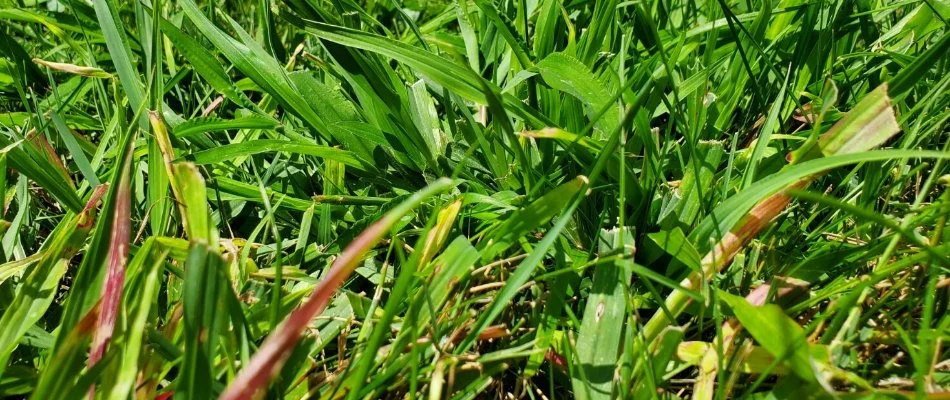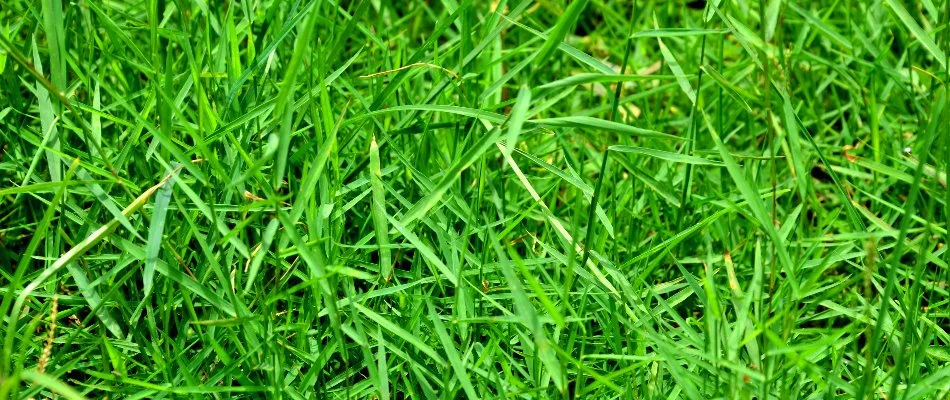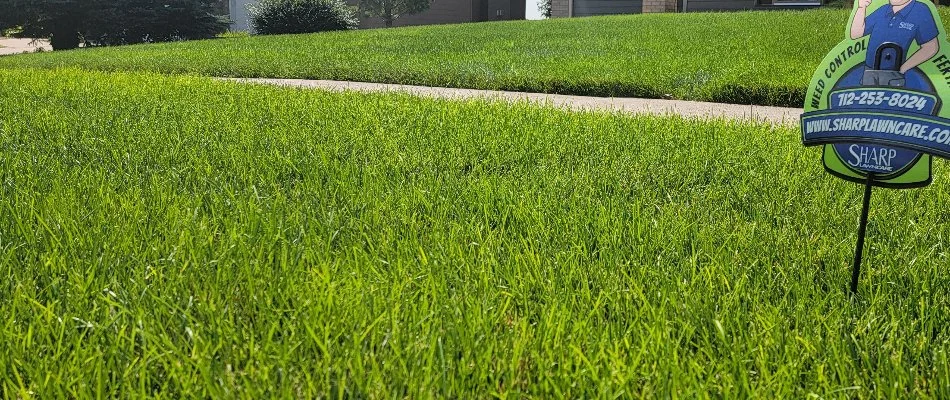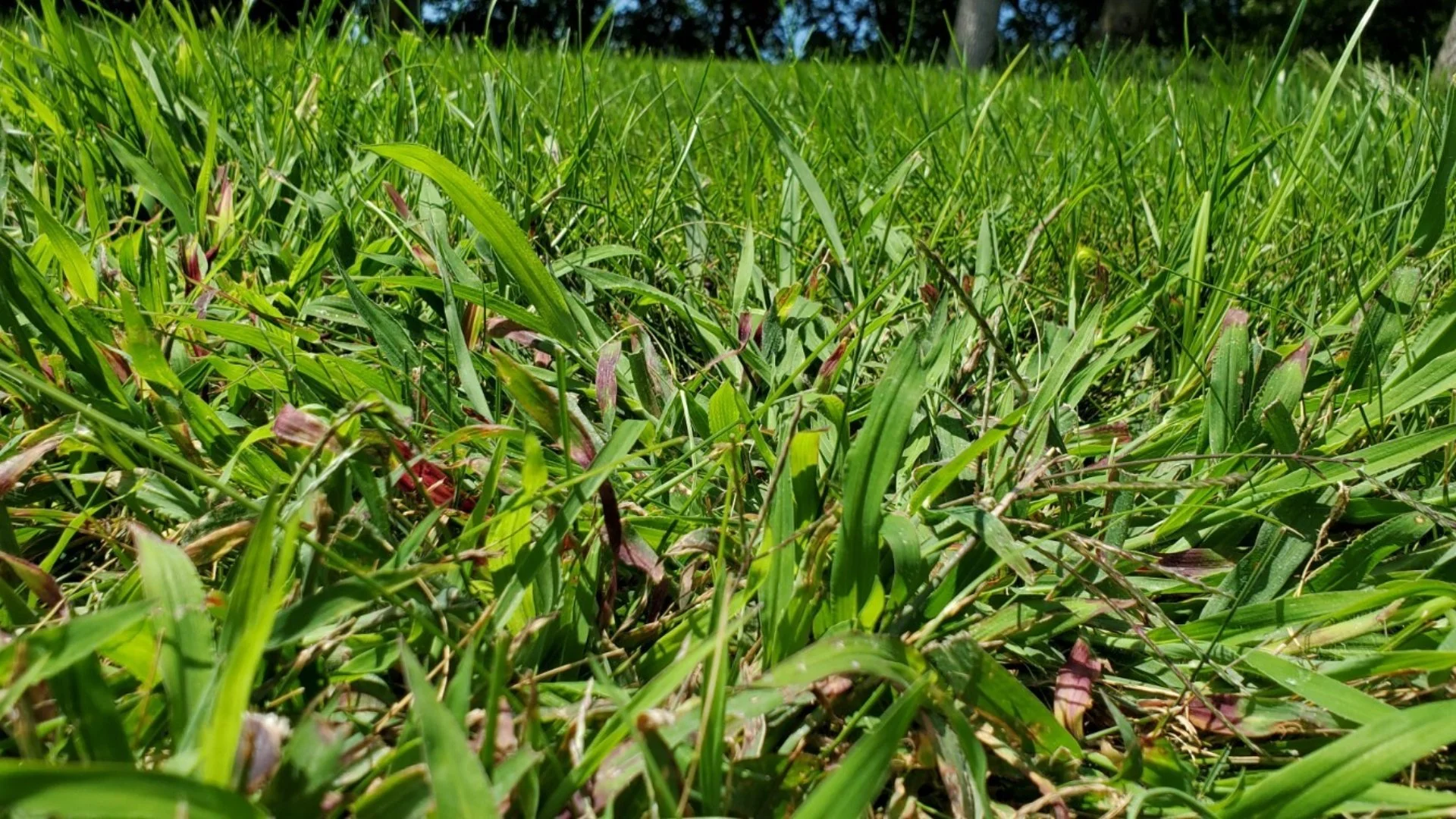Weeds are a common nuisance for lawns in South Dakota, but some are difficult to distinguish from regular grass, specifically crabgrass and quackgrass. Because of this, you'll want to know their identifiers and how to control them to ensure they don't cause problems for your desirable grass. Crabgrass grows in clumps, with coarse, light green leaves branching out from the center. Meanwhile, quackgrass is blueish-green with thick, flat leaves and spreads aggressively. Regular grass has finer blades and usually a darker green color. Utilizing pre- and post-emergent weed control treatments is the best way to control crabgrass and quackgrass.
Crabgrass Identifiers & How to Control It

Crabgrass is one of the most well-known weeds and is notorious for its persistence. This warm-season annual is low-growing and forms clumps, with coarse, light green leaves branching out from the center and resembling crab legs, hence the name. Crabgrass leaves are thicker than regular grass blades, boasting a pointed tip and tiny hairs, and the stems are round with a reddish-purple color.
Crabgrass is a stubborn, fast-growing weed, so controlling it will take patience and weed control treatments. Pre-emergent weed control treatments are highly effective at preventing newly germinated crabgrass from surfacing. Meanwhile, you'll want to utilize post-emergents to eliminate any existing growth on your lawn.
Quackgrass Identifiers & How to Control It

Quackgrass is a rapidly spreading perennial and is considered a weed because it crowds out your desirable grass. It can grow in clumps and reach close to four feet tall, with flat, thick, blueish-green leaves. It also has round stems, which the leaves connect to via auricles, which look like a collar around them.
Not only does quackgrass spread through seeds but creeping, underground rhizomes, too. As a result, it's a highly aggressive spreader and challenging to manage. The best way to control quackgrass is with pre-emergent treatments, as these will stop it from surfacing and causing problems in the first place. However, if it's already apparent on your lawn, you can eliminate it with post-emergent weed control treatments.
Regular Grass Identifiers

Though crabgrass and quackgrass closely resemble regular grass, their differences make them stand out. Your desirable grass will be uniform across the entire lawn, and the blades are typically fine-textured, more narrow, and darker green. Cool-season types are common here in South Dakota, including Kentucky bluegrass, turf-type tall fescue, and ryegrass. These grasses have different appearances and qualities, but they all yield a beautiful, thick lawn.
Call us today to sign up for our weed control service!
If you want to keep your lawn weed-free, you've come to the right place! At Sharp Lawn Care, we offer a weed control service that includes pre- and post-emergent treatments to prevent new weeds from surfacing and eliminate any existing growth. We'll apply our pre-emergents in early spring and mid-spring to get ahead of them, then utilize post-emergents throughout the growing season. We only use top-quality products, so you can rest assured that they're effective against pesky weeds like quackgrass, crabgrass, ground ivy, wild violet, and more. If that's not enough, this service also comes with routine fertilization applications to give your lawn all the nutrients it needs to stay healthy and beautiful!
We offer our weed control service to commercial and residential properties, as well as HOAs, in Sioux Falls, SD, Sioux City, IA, and other surrounding areas in South Dakota, including Tea and Harrisburg. If you're in the Sioux Falls, SD area, call us today at (605) 251-6880 to sign up! If you're in Sioux City, IA, you can reach us at (712) 253-8024 to receive an estimate.




Comments (0)
Thanks for your comment!
Thanks for your feedback! Your comments have been successfully submitted! Please note, all comments require admin approval prior to display.
Error submitting comment!
There is a problem with your comment, please see below and try again.